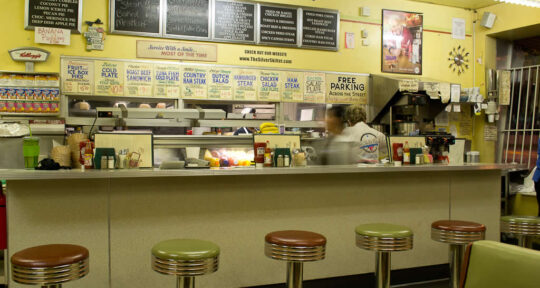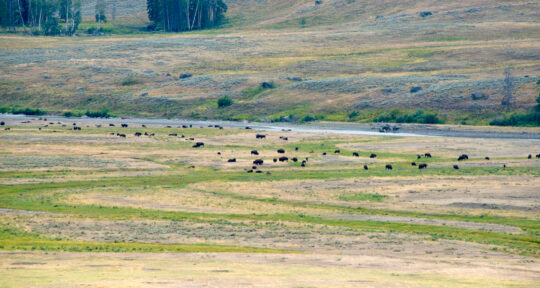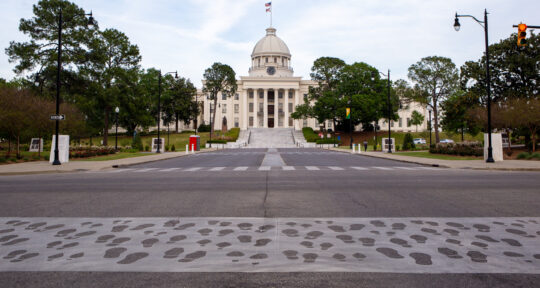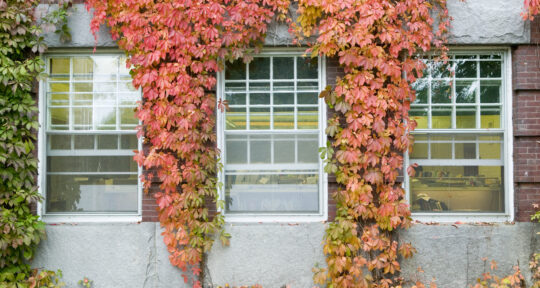The nation’s oldest, continuously-operated Chinese restaurant, Pekin Noodle Parlor, is surviving yet another pandemic. Tam Keong Yee opened the restaurant’s doors in 1911 in Butte, Montana, a boomtown that welcomed surges of immigrants from all over the world. Many came to Butte in the 1860s looking for gold, but ultimately made their fortunes with copper.
The country’s hunger for electricity fueled the demand for copper in the 1890s and paved the way for Butte to become known as “The Richest Hill on Earth” during its mining heyday.
Butte is no longer a boomtown. It’s rough around the edges and many of its side-by-side houses could use a fresh coat of paint. The Berkeley Pit, a mile-long, man-made divot that yielded 290 million tons of copper ore, is an eyesore that’s impossible to ignore. The pit is now filled with acidic, arsenic-laced water that’s toxic to all living creatures—except apparently Auditor, a shaggy, feral dog who somehow managed to survive there for 17 years and is now memorialized with a bronze statue in Butte.
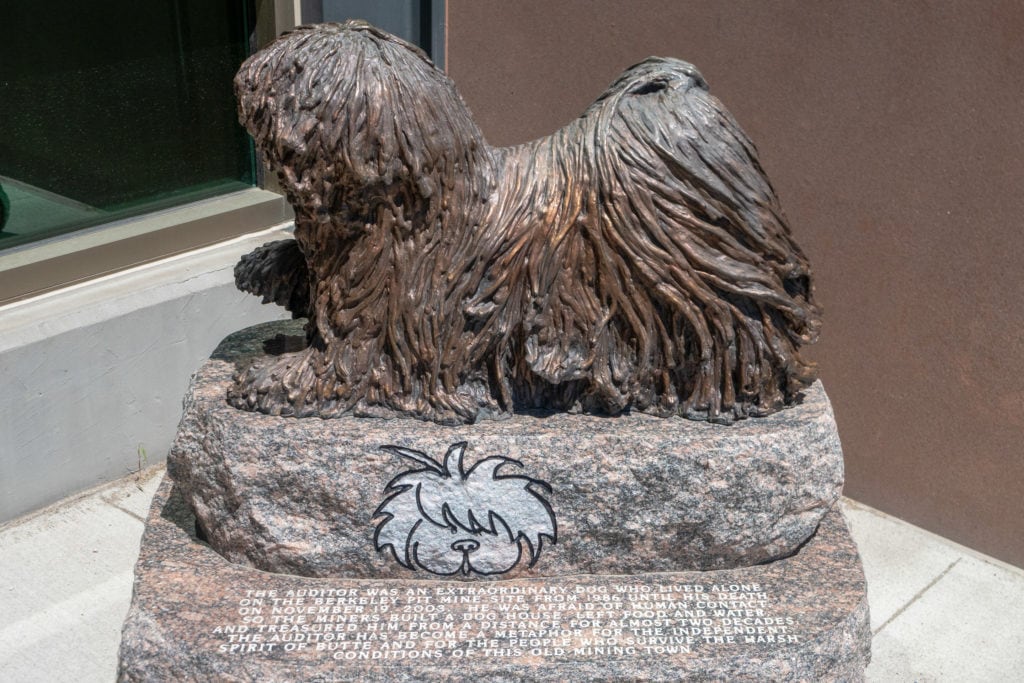
Butte’s skyline has 14 abandoned headframes marking the defunct mines. The tall steel structures once lowered men and mules into the mines and hauled ore out. Underground, 10,000 miles of tunnels connect these mines.
As the copper price declined, so did Butte’s population. Through it all, Pekin Noodle Parlor remained unchanged.
100 years
Today, Pekin Noodle Parlor is run by Jerry Tam, the fifth generation of his family to do so. Tam’s ancestors started a mercantile and later an herbal medicine shop on the ground floor—but the upper floor has always been a place for chop suey. The original sign above the restaurant’s entrance says so. I climb a steep set of stairs to get to the restaurant minutes after it opens, following three diners who came from Indiana just to experience dinner and hospitality at Pekin.
Chinese workers first came to Montana in the 1860s, seeking a better life and to try their luck at the gold rush. The restaurant was originally opened by Tam’s great-grandfather and great-great-uncle.
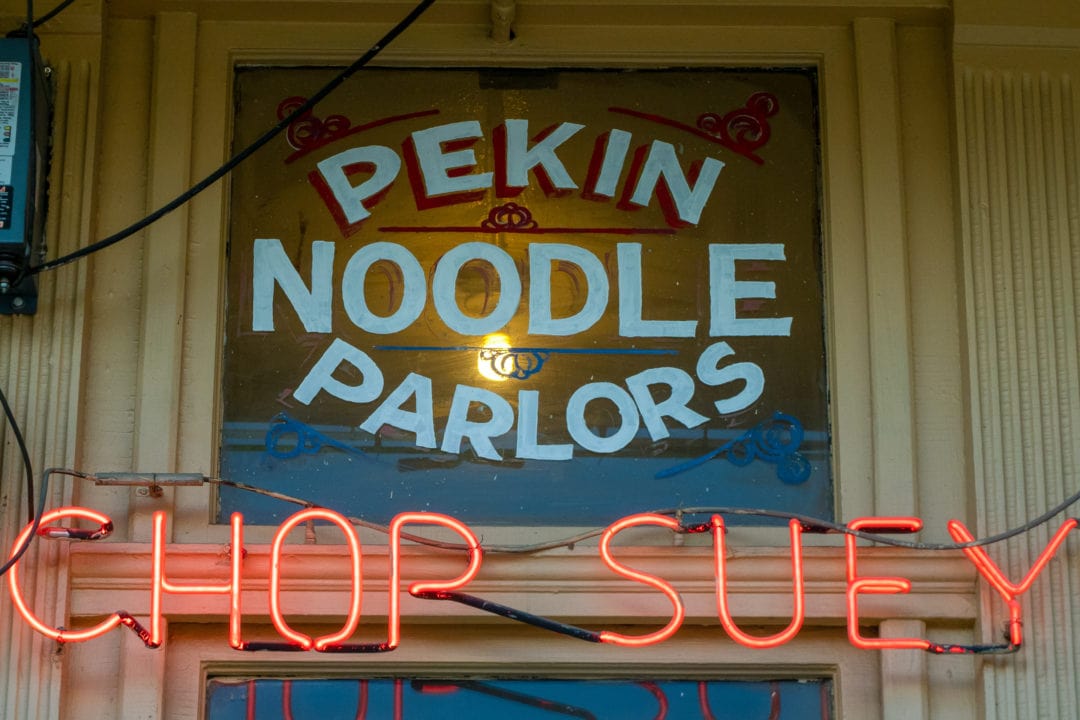
“Pekin has gone through every war, every pandemic,” Tam says over a plate of barbecued pork and hot mustard sauce. “And we’ve been social distancing for 109 years.”
The restaurant still has its original cubicles, featuring tangerine-colored walls that stop just short of the ceiling. Even though it is a traditional Chinese design, Pekin’s private dining setup has allowed it to weather two pandemics (and counting). The tables and wrought-iron ice cream parlor chairs are original, too.
Tam says the most important things to him are his family and preserving Pekin. After his mom passed away in 2014, Tam stepped in to help his dad, Danny Wong, run the restaurant. For Pekin’s 100-year anniversary, father and son served a complimentary dinner to 1,000 people.
Pekin’s patrons
Pekin opened before World War I and survived the 1918 flu pandemic. It bore witness to bloody riots between rival union workers and the dynamiting of the union hall in 1914. It shared the grief of an underground fire that claimed the lives of 168 miners in 1917. Pekin persevered despite anti-Asian sentiment and outlasted the Chinese Exclusion Act, which was overturned in 1943.
It stood as most of Chinatown’s other buildings were razed years ago. And Pekin remained through every economic downturn that’s occurred in a town whose livelihood is linked to a single industry. Today, as Butte transitions to a tourism-based economy, Pekin is a destination.
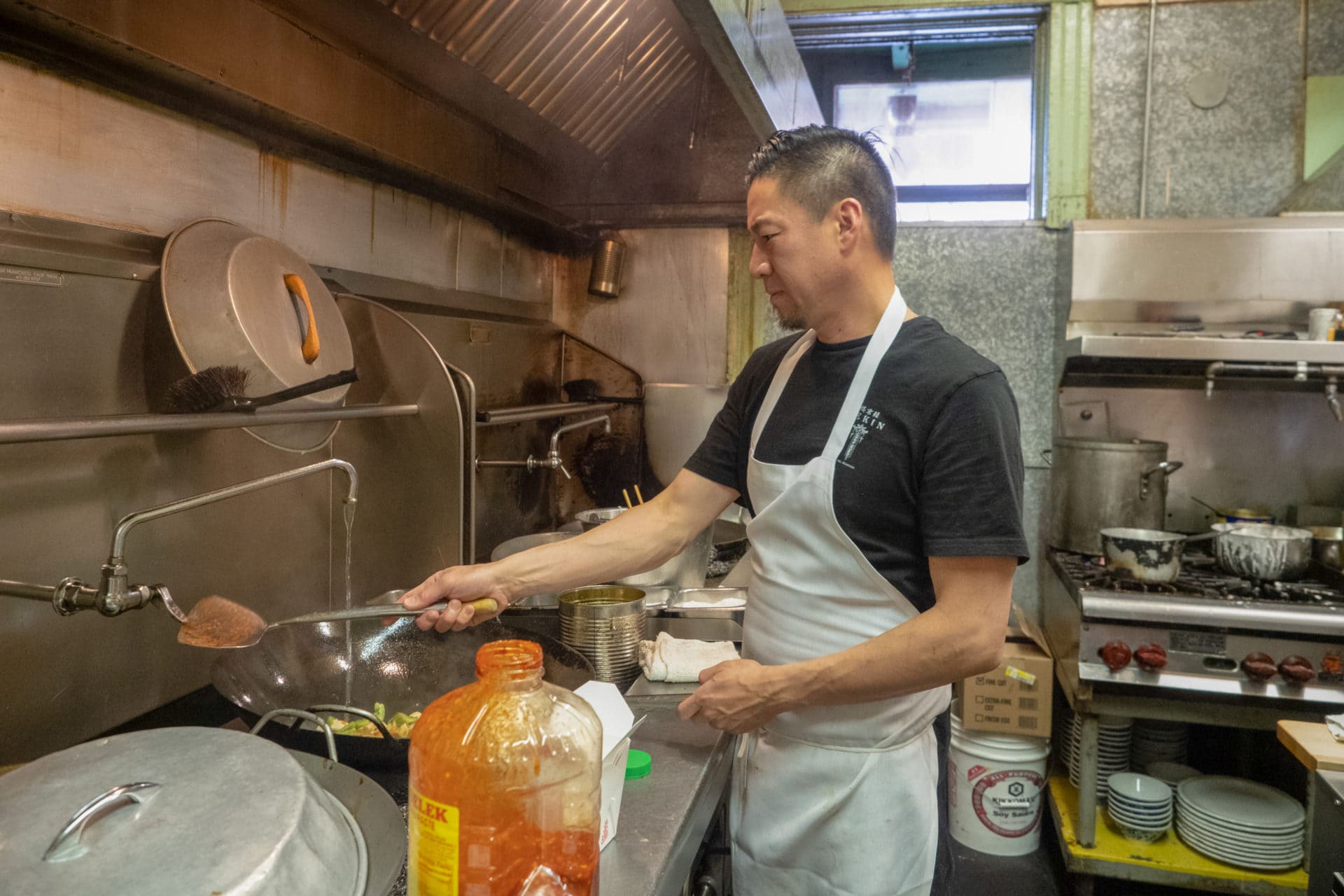
Over the years, Pekin, which was nominated for a James Beard Outstanding Hospitality award earlier this year, has welcomed celebrities, politicians, miners, and copper kings. Famous guests include country singer Waylon Jennings, who spent plenty of time in the lounge, and a handful of famous boy bands. “NSYNC and the Backstreet Boys sang ‘Happy Birthday’ to one of the band members right here,” Tam says, pointing to the banquet area. “Oh, and the cast from A River Runs Through It ate here, too, before Brad Pitt was famous.”
But, Tam insists, “the real celebrities are our regular customers.”
Comfort food
Years ago, Pekin stayed open until 4 a.m., feeding the bar patrons after last call and hosting its share of alcohol-fueled brawls; bullet holes mar the wainscot. The restaurant is tamer now—open from 5 p.m. until 3 a.m. on Friday and Saturday nights, and until 10 p.m. on weeknights.
So far, the restaurant has been thriving during the COVID-19 pandemic. Early on, patrons started ordering dinner for 10, easily filling a couple of boxes for takeout. They weren’t having dinner parties, just stocking up in reaction to the world shutting down. This is Butte’s comfort food. The restaurant is open again for in-person dining and the wheels of a serving cart make a clickety-clack sound as long-time waitress Arlene Breyer pushes it over the original floorboards.
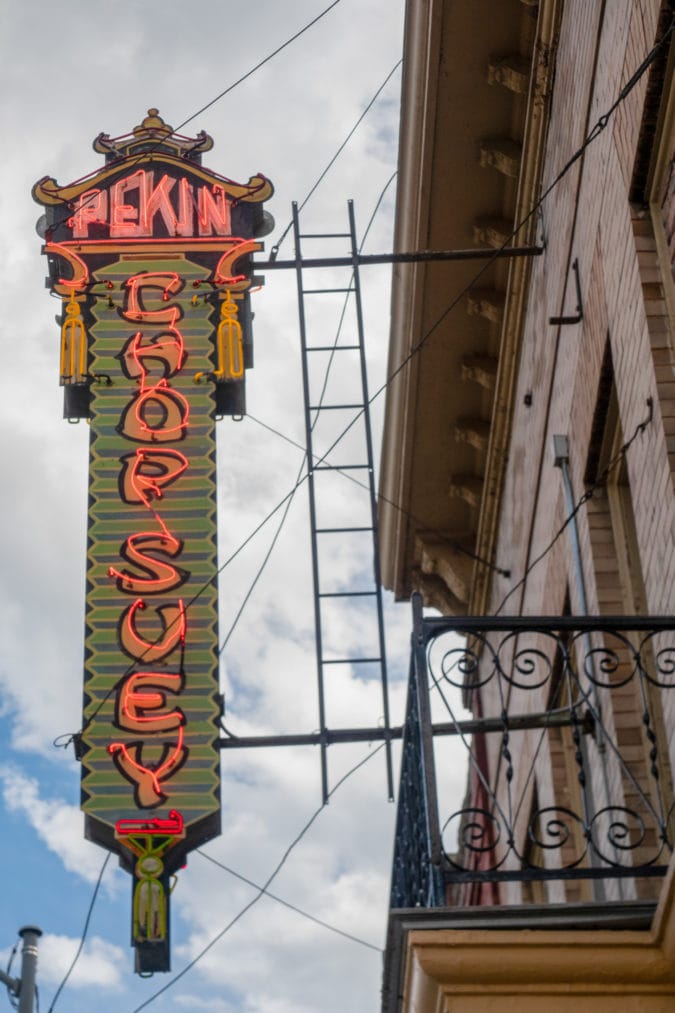
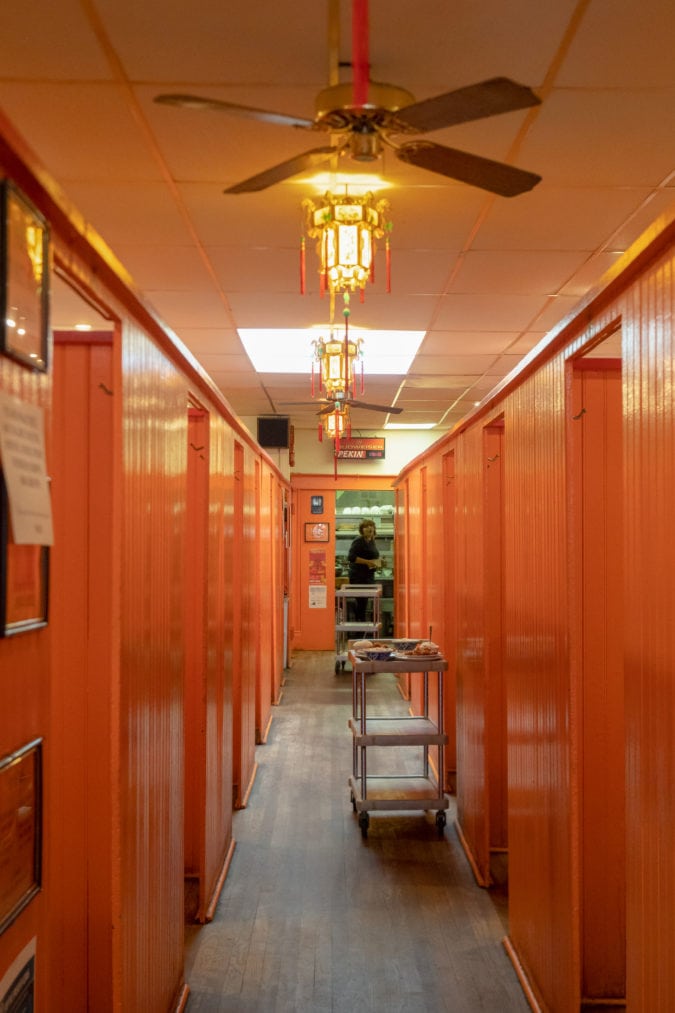
Tam gives me the behind-the-scenes tour, showing off the century-old smoker filled with pork tenderloin and the pulley system used to haul ingredients up to the second-floor restaurant. Stepping up to one of four huge woks, Tam tosses chicken, vegetables, and curry into sizzling oil. The curry is a secret family recipe and has a lot of zing. “Noodles or rice?” he asks. I choose noodles but he includes the rice, too.
“Pekin one, world zero,” Tam says. “One of my customers said that after World War III, Pekin will be the only thing still standing.”

